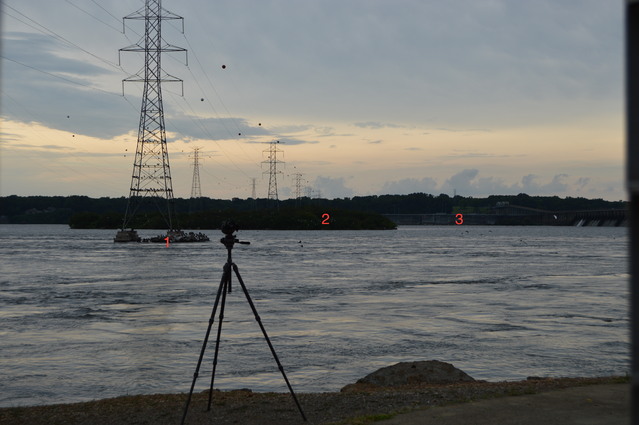So the last couple of days I've been going below Wheeler Dam on the Tennessee River. It's one of my favorite spots. Great diversity of birds. Generally, I use 7/8X binoculars and a scope pretty close to equal in time. I have been thinking about the 15X56 binocular vs. a scope.
I took a picture including some points of interest at exactly one of spots I tend to use a scope. Sorry for the exposure of the picture. A thunderstorm had just passed and I had to make do with what light I had. Distances listed were measured with my cars odometer. The dam is the bridge so it was easy.
1. Electrical wire tower(closest one of many)- 0.3 of a mile.
2. Island- 0.7 of a mile
3. Locks- 1.1 mile
Most of the birds at point one can be easily IDed with typical birding binoculars. Some of that is a factor of the birds that are at this spot, mostly larger species. Probably the smallest is Bonaparte's gull(appropriate time of year). Currently the smallest is probably a black-crowned night-heron. Also popular are GBH, GREG, and SNEG. Most popular is double-crested cormorant. There's 80 on this tower and base. About the same number yesterday except there was one neotropic cormorant in this group. I saw it thru the scope initially. Really not that easy of an ID. Could I have picked one out of 80 with 15X56 binoculars? I THINK I could have.
Point 2- Most of the birds here are similar with cattle egrets and American white pelicans. I don't even look at the island with binoculars. I immediately go to the scope. For sure at this distance I can't see how it would be possible to count species numbers without a scope. For instance I see a group of birds on the north end of the island. I can tell what a few of the species are but how many while pelicans?
Point 3- This distance is approaching the limit of the scope. If it's approaching the limit of an 88mm scope at 45-50X I can't see how a 15X56 binocular would do it.








